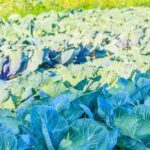Florida’s unique climate and soil conditions provide both challenges and opportunities for vegetable gardening. This article will explore the best vegetables to grow in Florida, as well as the ideal times to plant and harvest them. We’ll also provide tips for preparing and maintaining soil, controlling pests and diseases, and proper watering practices. Whether you’re an experienced gardener or just starting out, this guide will help you make the most of your Florida vegetable garden.
With its warm and humid climate, Florida offers a long growing season, allowing for multiple planting and harvesting cycles throughout the year. However, the state’s sandy soils and frequent rains also present challenges for successful vegetable cultivation. But fear not – with the right knowledge and techniques, it is possible to achieve thriving vegetable gardens in Florida.
In this article, we will delve into the specific needs of Florida vegetables, from selecting the best varieties to addressing common pest and disease issues. Additionally, we’ll explore the benefits of container gardening for those with limited space or soil access.
By following our guidance on soil management, watering practices, and harvest timing, you can cultivate a bountiful supply of fresh produce right in your own backyard. Discover how to make the most of gardening Florida vegetables with our comprehensive guide.
Ideal Vegetables for Florida
When it comes to gardening in Florida, choosing the right vegetables to grow is crucial for a successful harvest. The unique climate and soil conditions in Florida present both challenges and opportunities for vegetable gardeners. Fortunately, there are several vegetables that thrive in Florida’s warm and humid climate, making them ideal choices for local gardeners.
Tomatoes
Tomatoes are one of the most popular vegetables to grow in Florida thanks to their ability to withstand the heat and humidity. There are many varieties of tomatoes that are well-suited for Florida gardens, including cherry, grape, and heirloom tomatoes. With proper care and attention, home gardeners can enjoy a bountiful harvest of delicious tomatoes throughout the growing season.
Peppers
Peppers, including bell peppers, jalapenos, and habaneros, are also well-suited for Florida’s climate. These heat-loving vegetables thrive in the warm weather and can be grown successfully in both traditional garden beds and containers. With a little bit of care and maintenance, home gardeners can enjoy a variety of fresh peppers straight from their own backyard.
Squash
Squash varieties such as zucchini and yellow squash are another excellent choice for Florida vegetable gardens. These fast-growing vegetables are perfect for Florida’s long growing season and produce an abundant harvest. Whether grown on trellises or directly in the ground, squash plants can flourish in Florida’s warm climate with proper soil management and watering practices.
By selecting the right vegetables that are well-suited for Florida’s climate and soil conditions, home gardeners can enjoy a successful harvest of fresh produce throughout the year. With proper attention to soil management, pest control, watering practices, and seasonal planting schedules mentioned in this guide about gardening Florida vegetables; local gardeners can experience the joy of growing their own delicious fruits and vegetables at home.
Seasonal Planting Calendar
Florida’s unique climate and soil conditions offer both challenges and opportunities for vegetable gardeners. Understanding the seasonal planting calendar is crucial for successful gardening in Florida, as it helps determine the best times to plant and harvest different vegetables.
In Florida, the climate can vary greatly from north to south, so it’s important to consider your specific location when planning your vegetable garden. Generally, the fall and winter months are ideal for growing cool-season crops such as lettuce, kale, carrots, and broccoli. These vegetables thrive in the milder temperatures and shorter days of the Florida winter.
As spring arrives and temperatures warm up, Florida gardeners can transition to planting warm-season crops like tomatoes, peppers, squash, and cucumbers. These vegetables require plenty of sunlight and warmth to grow successfully, making them perfect for the hot and humid Florida summers.
One of the benefits of gardening Florida vegetables is that the long growing season allows for multiple plantings throughout the year. Successive planting of quick-maturing crops such as green beans or radishes can ensure a continuous harvest throughout the seasons. By following a seasonal planting calendar specifically tailored to Florida’s climate, vegetable gardeners can maximize their yields and enjoy a bountiful harvest year-round.
Soil Management
When it comes to successful vegetable gardening in Florida, soil management is crucial. Florida’s sandy soil and high temperatures present unique challenges for gardeners, but with the right techniques, you can create a thriving vegetable garden. Here are some tips for preparing and maintaining the soil for successful gardening in Florida:
1. Soil Testing: Before you start planting, it’s essential to test your soil to understand its pH levels and nutrient composition. You can purchase DIY soil testing kits or send samples to a professional lab for analysis. Based on the results, you can make informed decisions about which amendments to add to your soil.
2. Organic Matter: Incorporating organic matter into the soil is vital for improving its texture and fertility. In Florida, where sandy soil is prevalent, adding compost, aged manure, or other organic materials will help retain moisture and nutrients that vegetables need for healthy growth.
3. Mulching: Using mulch in your vegetable garden is particularly important in Florida’s hot climate. Mulch helps regulate soil temperature and moisture levels while also suppressing weeds. Organic mulches such as straw or pine bark are popular choices for Florida gardeners.
4. Crop Rotation: To maintain soil health and prevent disease buildup, practice crop rotation in your vegetable garden. This involves alternating the placement of different types of vegetables from year to year. For example, if you grew tomatoes in one area this year, plant them in a different section next year.
By implementing these soil management practices, you can create an ideal growing environment for your Florida vegetables. With proper care and attention to your soil, you’ll be on your way to enjoying a bountiful harvest of fresh produce from your garden.
Pest and Disease Control
When it comes to gardening Florida vegetables, dealing with common pests and diseases is a crucial aspect of ensuring a successful harvest. Some of the most common pests that affect Florida vegetables include aphids, whiteflies, caterpillars, and thrips.
These pests can cause significant damage to crops if not managed properly. In addition to pests, Florida gardeners also need to be on the lookout for diseases such as bacterial spot, powdery mildew, and wilt diseases which can impact the health and yield of vegetable plants.
Prevention is key when it comes to managing pests and diseases in Florida vegetable gardens. One effective method is practicing crop rotation to disrupt pest and disease cycles. Additionally, using mulch can help maintain soil moisture while also reducing the spread of certain diseases. It’s important for Florida gardeners to regularly inspect plants for signs of pest infestations or disease development so that timely action can be taken.
For those who prefer natural methods, there are eco-friendly options available for controlling pests and diseases in Florida vegetables. This includes introducing beneficial insects like ladybugs or using neem oil as a bio-pesticide. For more severe cases, there are organic pesticides approved for use in organic gardening that can effectively manage pest infestations without harming the environment.
| Pest/Disease | Prevention/Management |
|---|---|
| Aphids | Crop rotation and natural predators |
| Whiteflies | Mulching and insecticidal soap |
| Powdery Mildew | Neem oil and pruning affected areas |
Container Gardening
Container gardening is a great option for Florida gardeners who may not have access to a traditional garden plot or who want to have more control over the growing conditions of their vegetables. The benefits of container gardening in Florida include the ability to easily move your plants to avoid extreme weather conditions, limited space requirements, and the opportunity to customize soil and drainage for each individual plant.
When choosing containers for your Florida vegetable garden, be sure to select pots or other containers that are large enough to accommodate the root systems of the plants you want to grow. Additionally, ensure that the containers have adequate drainage holes to prevent waterlogging, which can be a common issue in Florida’s humid climate. Some popular vegetables for container gardening in Florida include tomatoes, peppers, herbs, and leafy greens.
Proper techniques for container gardening in Florida should include using high-quality potting mix that provides good drainage and nutrition for your plants. Additionally, regular watering is essential, as containers can dry out quickly in the hot Florida sun. Consider using self-watering containers or drip irrigation systems to maintain consistent moisture levels. By following these techniques and choosing suitable varieties of vegetables, Florida gardeners can enjoy successful container gardening throughout the year.
| Vegetable | Ideal Container Size |
|---|---|
| Tomatoes | 5 gallon (18-23 liter) pots |
| Peppers | 3 gallon (11 liter) pots |
| Herbs | 2-3 gallon (7-11 liter) pots |
| Leafy Greens |
Watering and Irrigation
Understanding Florida’s Climate
Florida’s climate is characterized by high temperatures and frequent rainfall, especially during the summer months. These conditions can lead to both overwatering and underwatering, which can have detrimental effects on vegetable plants. It is important for Florida gardeners to understand the specific water needs of different vegetables based on their stage of growth and adjust their watering practices accordingly.
Choosing the Right Irrigation System
In Florida, where water conservation is important, choosing the right irrigation system for your vegetable garden is crucial. Drip irrigation systems are a popular choice among Florida gardeners as they deliver water directly to the roots of plants, minimizing evaporation and water waste. Additionally, using a timer with your irrigation system can help ensure that your vegetables receive consistent and adequate moisture without the need for manual intervention.
Monitoring Soil Moisture
Regularly monitoring soil moisture is essential for successful vegetable gardening in Florida. Using a moisture meter or simply checking the soil by hand can help you determine when it’s time to water your vegetables. It’s important to keep in mind that different vegetables have varying water needs, so paying attention to each plant’s requirements is key to maintaining optimal soil moisture levels.
By implementing proper watering and irrigation practices, Florida gardeners can ensure healthy vegetable growth and maximize their harvests throughout the year.
Harvesting and Storage
In conclusion, gardening Florida vegetables offers a unique set of challenges and opportunities for gardeners. By exploring the best vegetables to grow in Florida’s climate and soil conditions, learning the ideal times to plant and harvest different vegetables, and understanding the importance of proper soil management, gardeners can achieve successful vegetable gardens in the Sunshine State.
One key aspect of vegetable gardening in Florida is pest and disease control. By familiarizing themselves with common pests and diseases that affect Florida vegetables, gardeners can implement preventive measures to manage them effectively. Additionally, techniques such as container gardening can provide numerous benefits for Florida gardeners, offering flexibility and mobility in their gardening endeavors.
Proper watering and irrigation practices are essential for healthy vegetable growth in Florida’s climate. By ensuring adequate watering and irrigation, gardeners can minimize stress on their plants and promote optimal growth. Lastly, guidance on when and how to harvest Florida vegetables is crucial for maintaining freshness and storage.
With this knowledge, Florida gardeners can enjoy the fruits of their labor while maximizing the shelf life of their homegrown produce. Overall, by incorporating these tips and techniques into their gardening practices, individuals can experience success in growing a variety of delicious vegetables in the unique environment of Florida.
Frequently Asked Questions
What Vegetables Grows Best in Florida?
Some of the vegetables that grow best in Florida include tomatoes, peppers, squash, cucumbers, and sweet corn. These warm-season crops thrive in the state’s hot and humid climate.
What Is the Best Month to Plant Vegetables in Florida?
The best month to plant vegetables in Florida varies depending on the specific vegetable and the region within the state. Generally, for most warm-season vegetables, March or April is a good time to start planting.
Can You Grow Veggies All Year Round in Florida?
Yes, it is possible to grow veggies all year round in Florida due to its favorable climate. While certain crops may be better suited for certain seasons, with careful planning and selection of appropriate varieties, you can have a continuous harvest throughout the year.

If you’re looking to get into vegetable gardening, or are just looking for some tips on how to make your current garden better, then you’ve come to the right place! My name is Ethel and I have been gardening for years. In this blog, I’m going to share with you some of my best tips on how to create a successful vegetable garden.





